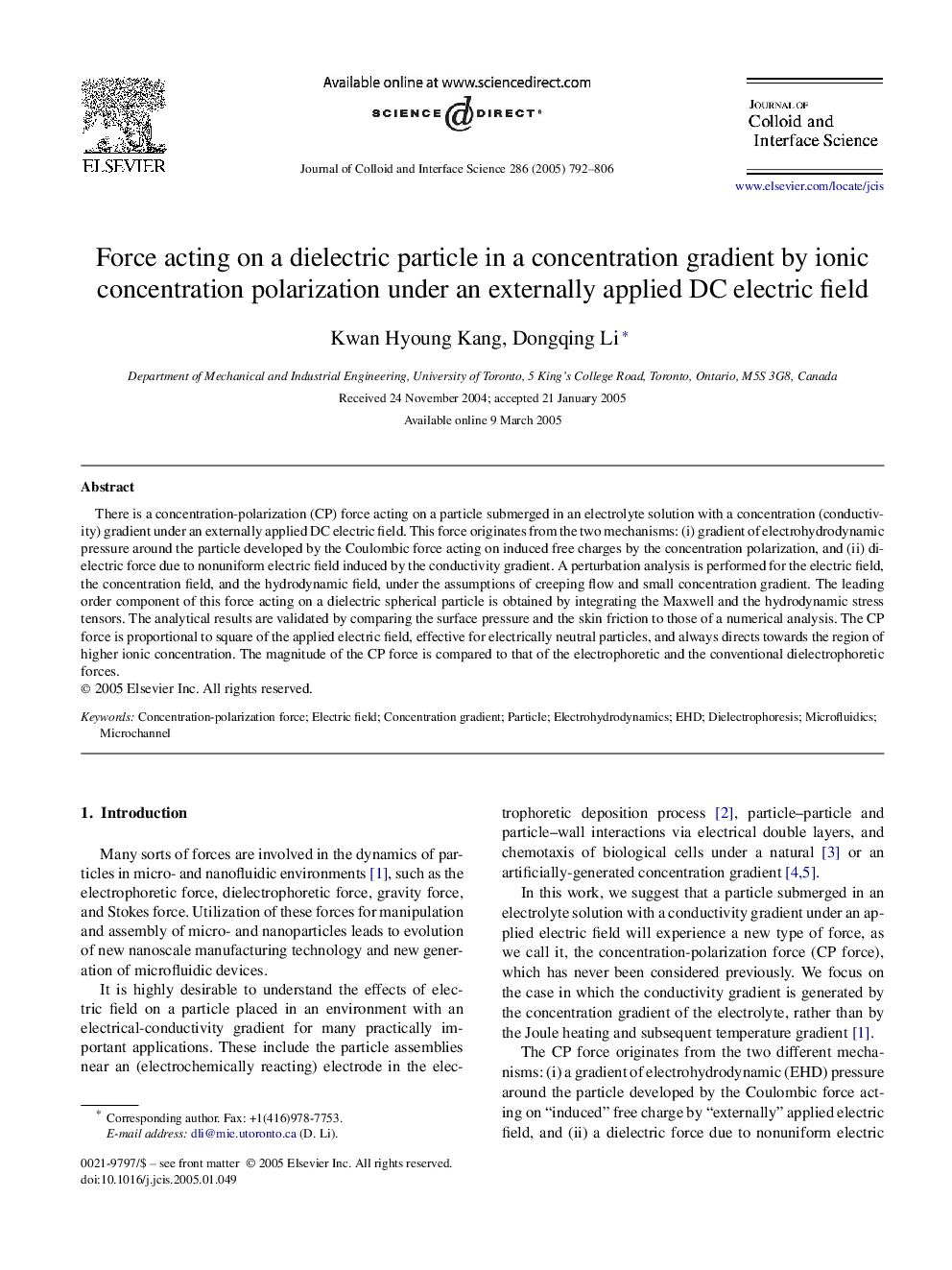| Article ID | Journal | Published Year | Pages | File Type |
|---|---|---|---|---|
| 10377995 | Journal of Colloid and Interface Science | 2005 | 15 Pages |
Abstract
There is a concentration-polarization (CP) force acting on a particle submerged in an electrolyte solution with a concentration (conductivity) gradient under an externally applied DC electric field. This force originates from the two mechanisms: (i) gradient of electrohydrodynamic pressure around the particle developed by the Coulombic force acting on induced free charges by the concentration polarization, and (ii) dielectric force due to nonuniform electric field induced by the conductivity gradient. A perturbation analysis is performed for the electric field, the concentration field, and the hydrodynamic field, under the assumptions of creeping flow and small concentration gradient. The leading order component of this force acting on a dielectric spherical particle is obtained by integrating the Maxwell and the hydrodynamic stress tensors. The analytical results are validated by comparing the surface pressure and the skin friction to those of a numerical analysis. The CP force is proportional to square of the applied electric field, effective for electrically neutral particles, and always directs towards the region of higher ionic concentration. The magnitude of the CP force is compared to that of the electrophoretic and the conventional dielectrophoretic forces.
Keywords
Related Topics
Physical Sciences and Engineering
Chemical Engineering
Colloid and Surface Chemistry
Authors
Kwan Hyoung Kang, Dongqing Li,
